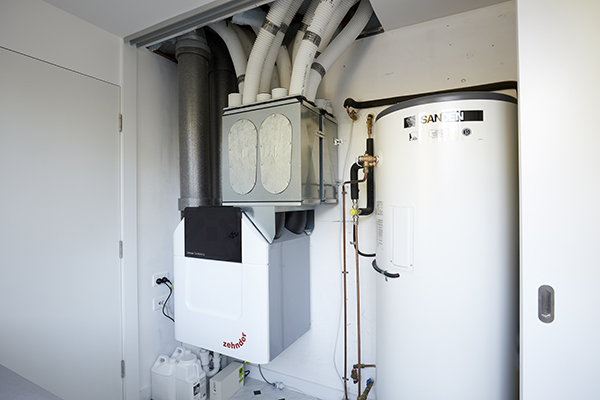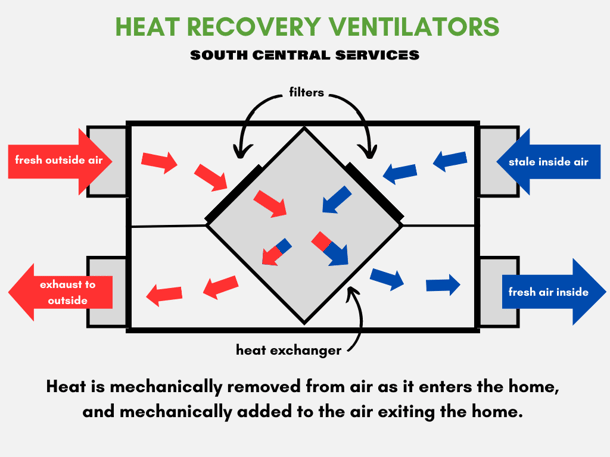A Step-by-Step Guide to HRV Maintenance
The All-Inclusive Overview to the Uses of Heat Recovery Ventilation in Modern Structures
Heat Recovery Ventilation (HRV) systems represent a considerable innovation in building modern technology (HRV Heat Recovery Ventilation). They provide a method for trading stagnant interior air with fresh outside air while lessening power loss. This strategy not just enhances indoor air top quality but additionally contributes to energy performance in both residential and commercial buildings. Comprehending the various applications and benefits of HRV can disclose its important duty in modern design and sustainability efforts. The ramifications of this innovation deserve checking out even more
Recognizing Heat Recovery Ventilation Equipments

Lots of modern structures focus on power effectiveness, comprehending warmth recuperation air flow (HRV) systems is crucial for enhancing interior air top quality and reducing energy consumption. HRV systems function by moving warm from stale interior air to incoming fresh air, efficiently maintaining comfortable interior temperatures while lessening power loss. These systems contain a heat exchanger, fans, and ductwork that help with the circulation of air. During winter months, HRV systems record and reuse heat from the outbound air, while in summer, they can aid cool down incoming air. By continuously exchanging air, HRV systems also reduce humidity and the concentration of interior pollutants. Proper setup and maintenance of HRV systems are vital for their effectiveness and efficiency in enhancing general structure performance and comfort.
Advantages of Heat Recovery Ventilation
Heat recovery ventilation systems provide various advantages that improve both energy effectiveness and indoor air high quality in modern buildings. By capturing and recycling power from exhaust air, these systems greatly minimize heating & cooling prices, leading to reduced energy intake. They keep a consistent flow of fresh exterior air, reducing the risk of interior air pollutants and allergens. This continuous exchange helps control moisture degrees, stopping mold and mildew growth and guaranteeing a much healthier living environment. In addition, HRV systems add to sustainability objectives by lowering general carbon impacts. Their ability to optimize ventilation without giving up thermal convenience makes them a valuable addition to modern building layout, advertising both economic and eco-friendly advantages.
Applications of HRV in Residential Structures
As property owners progressively prioritize power performance and interior air quality, the applications of warmth recuperation ventilation (HRV) systems in residential buildings have actually come to be a lot more prevalent. HRV systems are particularly valuable in firmly secured homes, where keeping fresh air circulation is vital for protecting against wetness build-up and indoor toxins. They successfully move warmth from outgoing stale air to incoming fresh air, minimizing power expenses linked with home heating and cooling. In addition, HRVs can improve comfort degrees by controling moisture and temperature level. They are likewise versatile for various domestic designs, consisting of single-family homes and multi-unit buildings. Overall, integrating HRV systems sustains sustainable living practices while guaranteeing a healthier indoor environment for passengers.
HRV in Commercial and Commercial Settings
In business and commercial setups, the implementation of warmth healing air flow (HRV) systems has actually become significantly critical for optimizing energy efficiency and preserving air high quality. These systems effectively move warm from exhaust Learn More Here air to incoming fresh air, minimizing the need for extra heating or useful site air conditioning. This not only decreases energy expenses yet also adds to sustainability campaigns. Industries such as production, warehousing, and workplace structures benefit considerably from HRV systems, as they aid manage temperature and moisture degrees, guaranteeing a comfy and productive setting. HRV systems help in removing contaminants and excess moisture, enhancing indoor air top quality. As regulations around air top quality come to be stricter, the fostering of HRV technology is most likely to expand, making it an essential element of contemporary commercial and commercial framework.
Future Patterns in Heat Recovery Ventilation Innovation

Frequently Asked Questions
How Does Heat Recovery Ventilation Impact Indoor Air Top Quality?
Heat recovery ventilation considerably boosts indoor air quality by constantly trading stagnant indoor air with fresh exterior air while recovering power. This procedure reduces pollutants, keeps suitable humidity levels, and guarantees a healthier atmosphere for passengers.
Can HRV Solutions Be Mounted in Existing Buildings?
HRV systems can certainly be mounted in existing buildings. Retrofitting may need modifications to ductwork and air flow formats, yet it substantially boosts energy efficiency and interior air top quality, making it a feasible alternative for older structures.
What Maintenance Is Required for HRV Solutions?

Are There Particular Climates Where HRV Is Much More Reliable?
Heat recovery ventilation systems are particularly efficient in environments with significant temperature level distinctions between periods. These systems enhance energy performance by recuperating warm from exhaust air, making them excellent for both cool and reasonably warm environments.
Exactly How Do HRV Equipments Affect Energy Costs?
